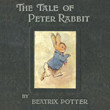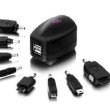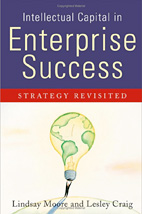The picture to the left is a “self-portrait” taken by a female Celebes crested macaque in Indonesia. The macaque, who is named “Naruto,” picked up the camera of a photographer named David Slater and took the picture of herself with it. Look at her smiling at the camera. What a character.
Intellectual Property
"Intellectual property" is the legally protectable and enforceable aspects of intellectual capital, and it includes trademarks, patents, copyrights, trade secrets, right of publicity, and contracts. Increasing, intellectual property assets are becoming more valuable than the traditional physical assets such as plant, property, equipment, and cash.
Peter Rabbit Loses Copyright Protection
In the U.S., and many other countries, copyright protection lasts until the death of the creator plus 70 years. In 2014, creators who died in 1943 fall into the public domain. Some of those creators include author Beatrix Potter, Sergei Rachmaninoff, Nikola Tesla, Simone Weil, Radclyffe Hall, and Max Wertheimer.
Justice Comes to Standard-Essential Patents
The Courts are reining in the improper assertion of “standard-essential patents” in patent infringement lawsuits. Standard-essential patents are those “industry standard” patents that cover basic functions that all technological devices have to perform to operate seamlessly with one another. In Apple v Samsung, the International Trade Commission uncharacteristically found in favor of Samsung.
Trade Secret Strategy
Trade secrets can often be used to protect company knowledge and invention in instances where patent protection is either not desirable or available. For example, when trade secrets are viewed as an alternative to patent protection they are commonly invoked in instances where the 20 year life of a patent isn’t deemed to be sufficient, or where the knowledge should never be made public (cf. the famous Coca-Cola recipe).
Patent Acquisitions – What’s Behind Them
If recent news is any indicator, patents are extremely valuable assets! During 2011, Nortel Networks Corporation sold 6,000 patents for $4.5 billion to a technology consortium that included Apple, Microsoft and RIM. Shortly thereafter, Google bought, in one of the largest patent deals in history, more than 24,000 patents and patent applications from Motorola Mobility for $12.5 billion. Since 2011, IBM has sold more than 2,000 patents to Google for an undisclosed price. And now, Kodak, under the mandate of its Chapter 11 bankruptcy filing, is trying to sell 1,100 of its patents for $3 billion.
Monetizing IP During Financial Crisis (PDF)
Monetizing IP During Financial Crisis: Recent developments in the world of debt finance, the economy and the resultant recession of 2008 are all challenging companies financially. However, these developments highlight new ways for companies with actual or potential intellectual property to generate income, and in some cases to recapitalize themselves.
Does Google’s Purchase of Motorola Suggest It Is Changing Its Strategy?
In a recent editorial in the Wall Street Journal one commentator on the world of business puzzled that Google would so violate the patent rights of their competitors with their Android mobile operating system. He mused incredulously, that Google seems to assume that their competitors in the smartphone market don’t have a right to exclude them from using their intellectual property.
Patenting Food Products and Manufacturing Processes
Many manufacturing companies overlook the opportunity to patent aspects of their products or specialized manufacturing processes. This is especially true in the natural products industries, where unusual ingredients are often mixed together and specialized production processes are increasingly required to make food products and dietary supplement products that are acceptable to consumers. In most natural product categories, it takes substantial innovation for manufacturers to be able to produce successful functional and natural food or supplement products.
The Truth About Licensing (PDF)
Not every company is in a position to practice classical carrot and stick style licensing. But that does not mean that licensing is not an option for every business, regardless of the intangible assets they own.
Surviving Financial Crisis with Structural Capital (PDF)
With an intellectual-asset audit, companies can often find Rembrandts in the attic. Ideas, patents, trademarks and/or infringements are often discovered that may help capitalize the enterprise that holds them.








 As the knowledge-based economy expands, the companies and individuals that possess intangible intellectual assets, such as intellectual property, will need specialized expertise, strategic thinking, legal experience, and the wisdom necessary to manage intellectual assets.
As the knowledge-based economy expands, the companies and individuals that possess intangible intellectual assets, such as intellectual property, will need specialized expertise, strategic thinking, legal experience, and the wisdom necessary to manage intellectual assets.